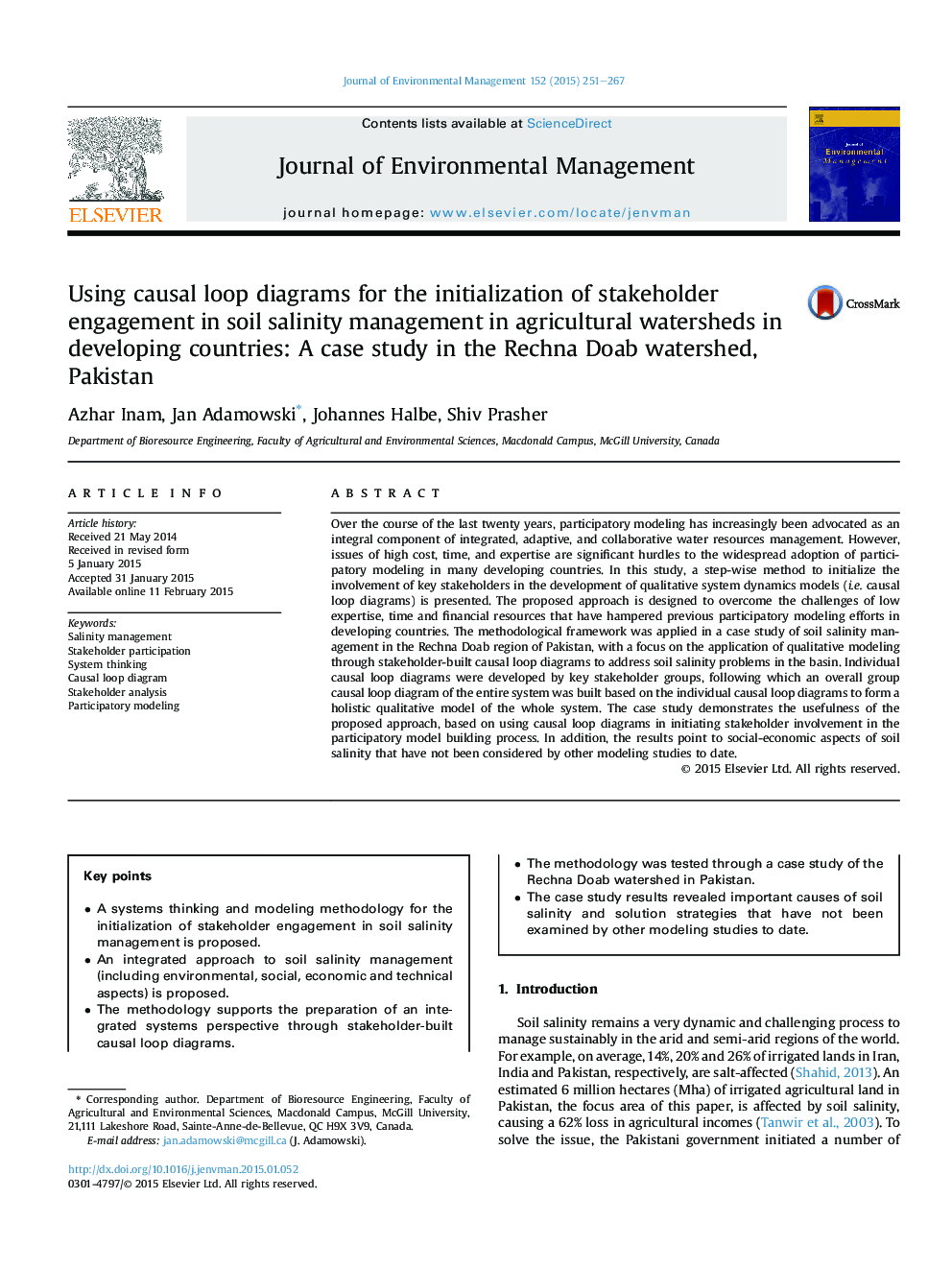| کد مقاله | کد نشریه | سال انتشار | مقاله انگلیسی | نسخه تمام متن |
|---|---|---|---|---|
| 7482644 | 1485260 | 2015 | 17 صفحه PDF | دانلود رایگان |
عنوان انگلیسی مقاله ISI
Using causal loop diagrams for the initialization of stakeholder engagement in soil salinity management in agricultural watersheds in developing countries: A case study in the Rechna Doab watershed, Pakistan
ترجمه فارسی عنوان
استفاده از نمودارهای حلقه های علی برای تعیین مقدار مشارکت ذینفعان در مدیریت شوری خاک در حوزه های آبخیز کشاورزی در کشورهای در حال توسعه: مطالعه موردی در حوزه آبخیز ربکا دواب، پاکستان
دانلود مقاله + سفارش ترجمه
دانلود مقاله ISI انگلیسی
رایگان برای ایرانیان
کلمات کلیدی
مدیریت شوری، شرکت مشارکت کننده، تفکر سیستم نمودار حلقه علمی، تجزیه و تحلیل متقابل، مدل سازی مشارکتی
موضوعات مرتبط
مهندسی و علوم پایه
مهندسی انرژی
انرژی های تجدید پذیر، توسعه پایدار و محیط زیست
چکیده انگلیسی
Over the course of the last twenty years, participatory modeling has increasingly been advocated as an integral component of integrated, adaptive, and collaborative water resources management. However, issues of high cost, time, and expertise are significant hurdles to the widespread adoption of participatory modeling in many developing countries. In this study, a step-wise method to initialize the involvement of key stakeholders in the development of qualitative system dynamics models (i.e. causal loop diagrams) is presented. The proposed approach is designed to overcome the challenges of low expertise, time and financial resources that have hampered previous participatory modeling efforts in developing countries. The methodological framework was applied in a case study of soil salinity management in the Rechna Doab region of Pakistan, with a focus on the application of qualitative modeling through stakeholder-built causal loop diagrams to address soil salinity problems in the basin. Individual causal loop diagrams were developed by key stakeholder groups, following which an overall group causal loop diagram of the entire system was built based on the individual causal loop diagrams to form a holistic qualitative model of the whole system. The case study demonstrates the usefulness of the proposed approach, based on using causal loop diagrams in initiating stakeholder involvement in the participatory model building process. In addition, the results point to social-economic aspects of soil salinity that have not been considered by other modeling studies to date.
ناشر
Database: Elsevier - ScienceDirect (ساینس دایرکت)
Journal: Journal of Environmental Management - Volume 152, 1 April 2015, Pages 251-267
Journal: Journal of Environmental Management - Volume 152, 1 April 2015, Pages 251-267
نویسندگان
Azhar Inam, Jan Adamowski, Johannes Halbe, Shiv Prasher,
